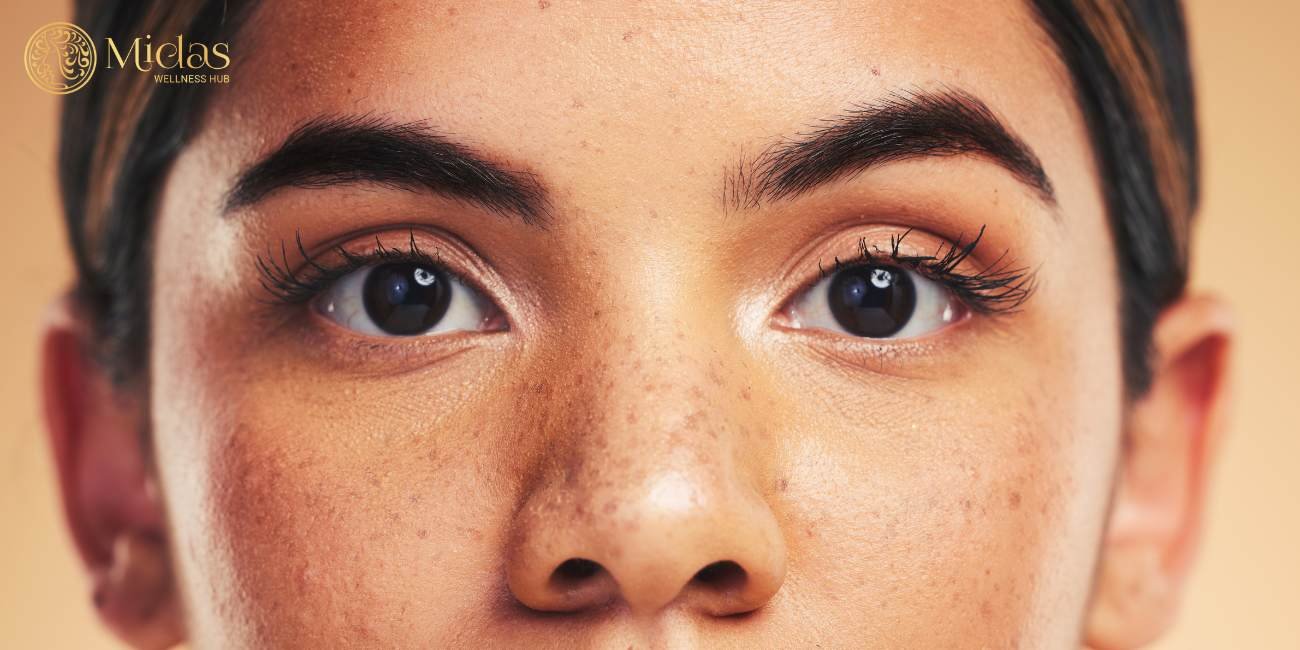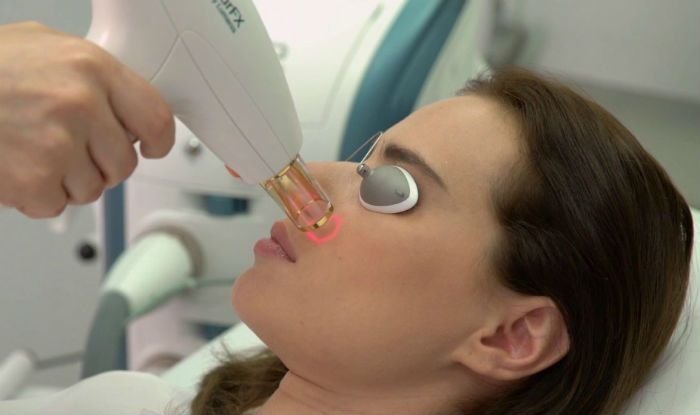
What is the Best Way to Treat Melasma?

Imagine waking up to a flawless reflection in the mirror, only to notice stubborn patches of discoloration on your skin. For many, melasma is not just a cosmetic concern; it’s a constant battle that impacts self-esteem. Understanding and addressing this skin condition requires knowledge, care, and the right treatments. But with so many options, how do you find the best way to treat melasma?
In this blog, we’ll explore melasma in detail, uncover its causes, dive into effective treatment options, and share tips to help you maintain radiant skin, especially during winter.
What is Melasma?
Melasma is a common skin condition characterized by dark, irregular patches on the face, neck, and sometimes other parts of the body. These patches are usually brown or grayish and most commonly appear on the cheeks, forehead, upper lip, and chin. While it isn’t harmful, it can be persistent and challenging to treat, often requiring professional intervention.
What Causes Melasma?
Understanding the root causes of melasma is key to finding the best way to treat melasma. Here are the primary culprits:
- Sun Exposure: UV rays stimulate melanin production, worsening melasma.
- Hormonal Changes: Pregnancy, birth control pills, or hormone replacement therapy can trigger melasma.
- Genetics: A family history of melasma increases your risk.
- Skincare Products: Certain products may irritate the skin, exacerbating the condition.
- Stress: Elevated stress hormones can indirectly influence melasma development.
Best Way to Treat Melasma
Finding the best way to treat melasma involves a combination of targeted treatments and preventive measures. Below, we’ll detail the most effective options:
1. Skin Treatment
Skin treatments are the best way to treat melasma and advanced dermatological interventions often provide quicker and more significant results. Skin PRP (Platelet-Rich Plasma) and Microneedling with Radiofrequency are key treatments that stimulate collagen production, improve skin texture, and target pigmentation, offering promising results for melasma sufferers.
2. Laser Treatment
Laser treatments are among the most advanced options available and are often considered the best way to treat melasma. These treatments work by targeting and breaking down melanin deposits. The Q-switch ND-Yag Laser is a popular choice due to its precision and effectiveness. It selectively targets pigmentation without damaging surrounding skin, making it ideal for even the most stubborn melasma patches.
3. Medi Facial
One of the best ways to treat melasma is through Medi facials as they go beyond traditional facials by using medical-grade products and techniques tailored to your skin’s needs. These treatments deeply cleanse, hydrate, and rejuvenate the skin, promoting an even complexion. Regular medi facials can complement other melasma treatments, ensuring long-term results and preventing recurrence.
- Peels
Chemical peels are a popular treatment option for melasma. These peels involve the application of a chemical solution to the skin, which exfoliates the top layers, helping to remove pigmented cells and promote the growth of new, healthier skin. Chemical peels can improve skin tone and texture, reducing the appearance of melasma.
Other Tips on How to Prevent Melasma
While treatment is crucial, prevention plays an equally important role. Here are some tips on best way to treat melasma:
- Use Sunscreen Daily: Opt for a broad-spectrum sunscreen with SPF 50 or higher.
- Wear Protective Clothing: Hats and sunglasses shield your skin from UV exposure.
- Choose Gentle Skincare Products: Avoid harsh chemicals that can irritate your skin.
- Maintain a Healthy Diet: Foods rich in antioxidants help combat skin damage.
- Avoid Heat Exposure: Hot environments can trigger melasma.
- Avoid Hormonal Triggers: Consult your doctor before using hormonal therapies or birth control pills.
- Manage Stress Levels: Practice stress-reducing techniques like meditation, yoga, or regular exercise to balance hormones.
- Opt for Non-Comedogenic Products: Use skincare and makeup products labeled as non-comedogenic to avoid clogging pores and irritating the skin.
- Get Regular Skin Check-ups: Routine visits to a dermatologist can help you monitor melasma and adjust your skincare regimen as needed.
Conclusion
Finding the best way to treat melasma requires a comprehensive approach combining professional treatments and preventive care. Whether it’s advanced laser therapies like the Q-switch ND-Yag Laser or rejuvenating Skin PRP sessions, the right choice can transform your skin and restore your confidence.
For tailored solutions and expert care, Midas Wellness Hub is your trusted partner. Our team of professionals offers customized treatments to help you achieve clear, radiant skin.
FAQs
Melasma is a chronic condition, and while there isn’t a guaranteed permanent solution, advanced treatments can offer long-lasting results. The best way to treat melasma is therapies like the Q-switch ND-Yag Laser, which targets melanin deposits effectively, and skin rejuvenation techniques such as Skin PRP and microneedling with radiofrequency are highly effective. With consistent care and preventive measures, melasma can be significantly reduced and maintained in remission for extended periods.
When it comes to melasma treatment, choosing the right clinic is crucial for optimal results. Midas Wellness Hub in Mumbai stands out as a top choice. Known for its technology and experienced dermatologists, the clinic offers advanced treatments like Q-switch ND-Yag Laser, medi facials, and customized skincare solutions tailored to your skin type and condition.
Melasma is not necessarily permanent, but it can be persistent and prone to recurrence. With proper treatment, such as laser therapies, chemical peels, and diligent skincare, the appearance of melasma can be significantly minimized. Maintaining these results requires ongoing preventive care, including sun protection and avoiding known triggers.
No, melasma is not cancerous. It is a benign skin condition caused by excessive melanin production. Although it doesn’t pose a health risk, melasma can impact one’s confidence and self-esteem. For accurate diagnosis and effective management, consulting a dermatologist is recommended.
Melasma is classified into four main types:
- Epidermal Melasma: Pigmentation in the superficial layers of the skin.
- Dermal Melasma: Pigmentation in deeper skin layers.
- Mixed Melasma: A combination of epidermal and dermal pigmentation.
- Sun-induced Melasma: Triggered by prolonged sun exposure.
For expert guidance and the best way to treat melasma, visit Midas Wellness Hub and take the first step towards rejuvenated skin.














